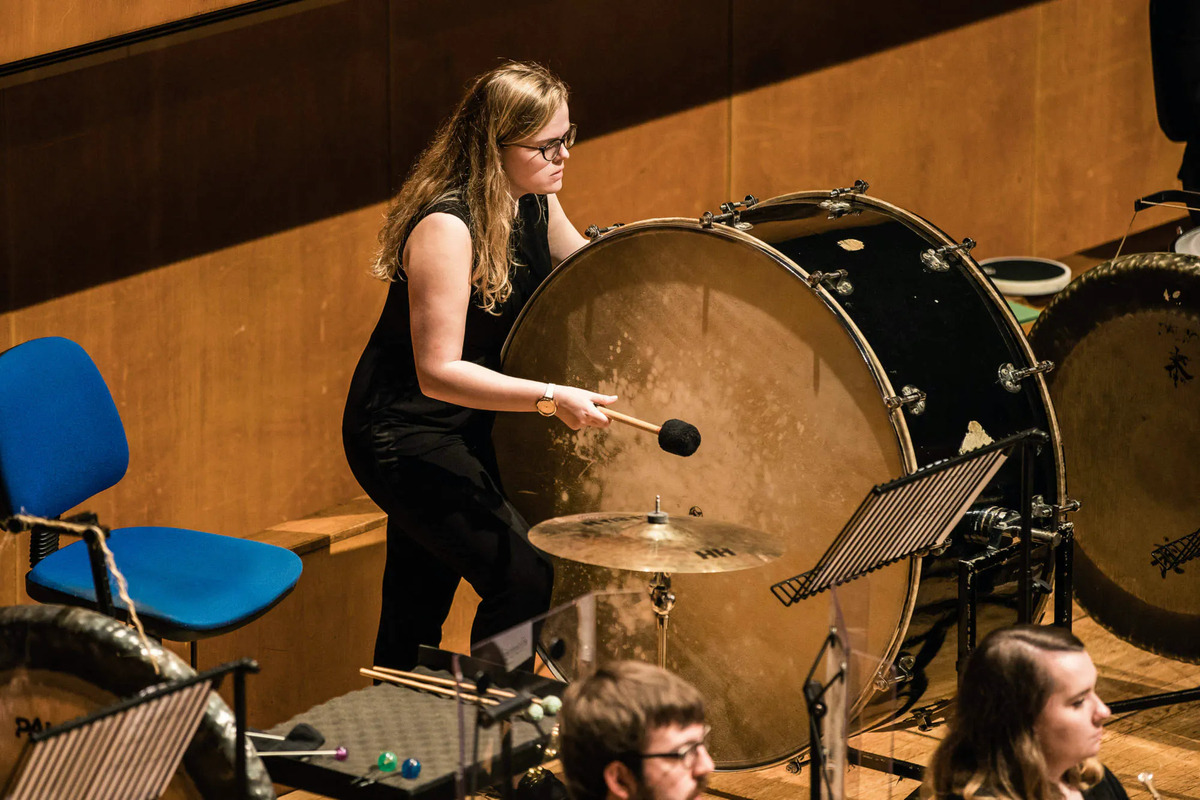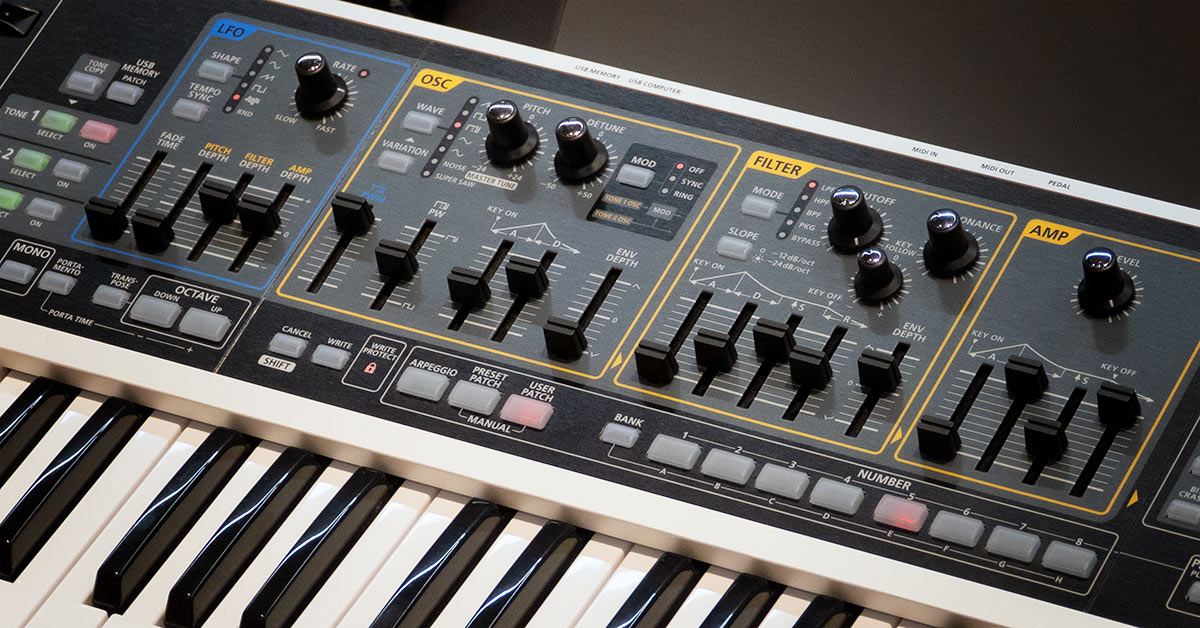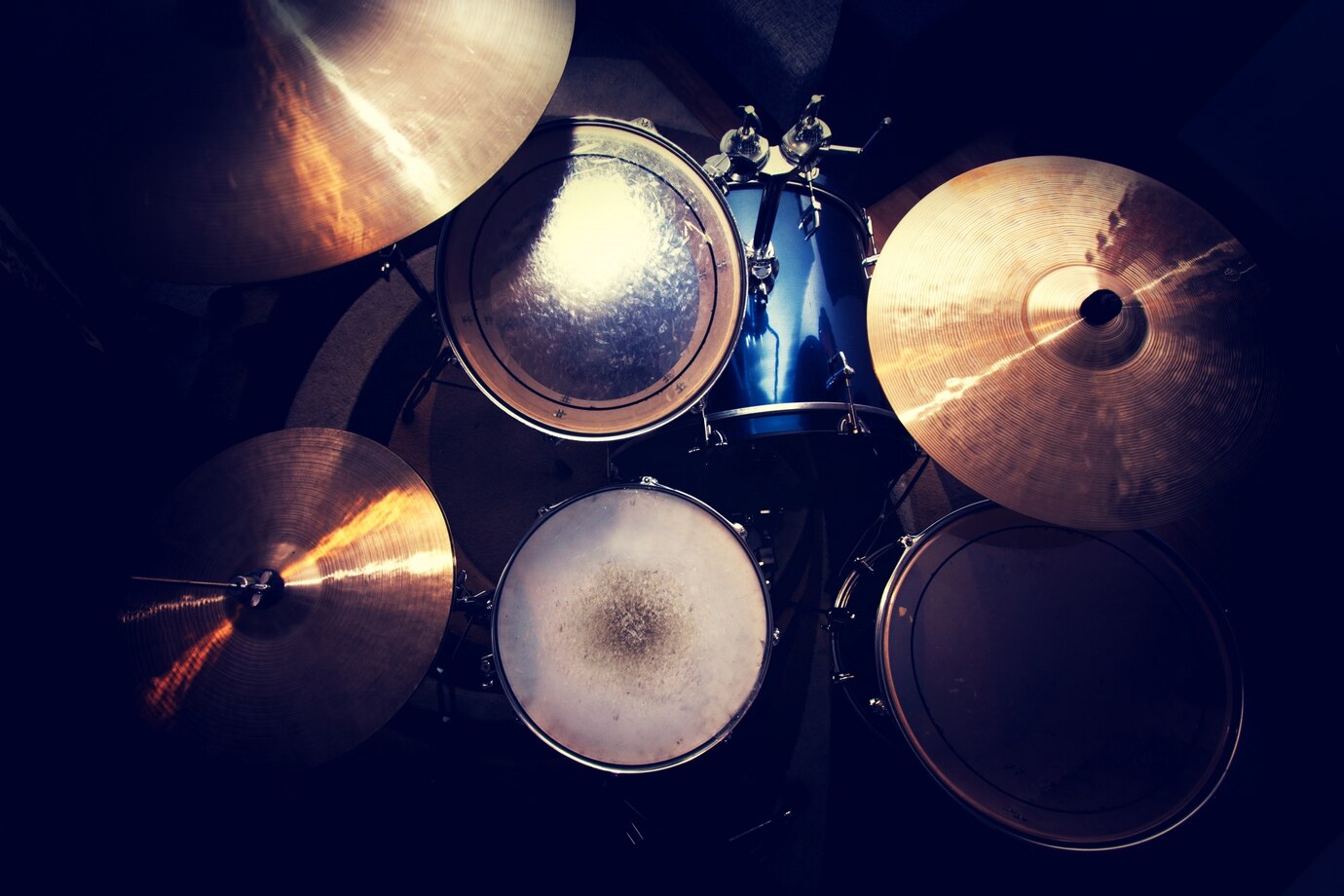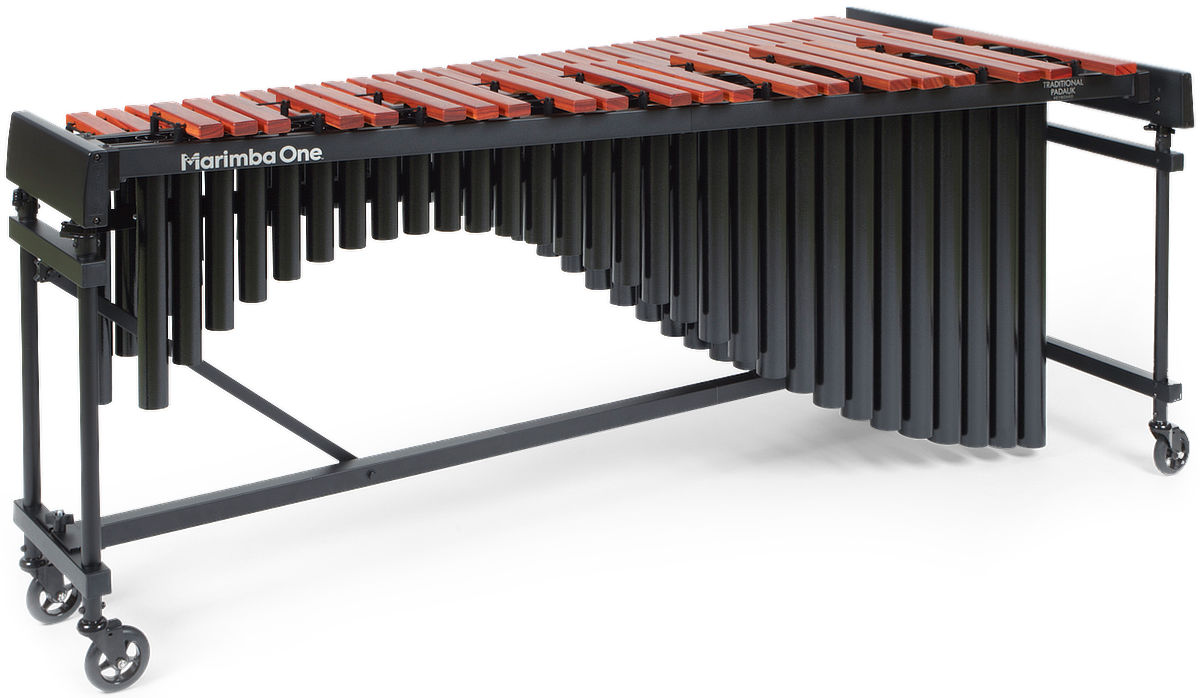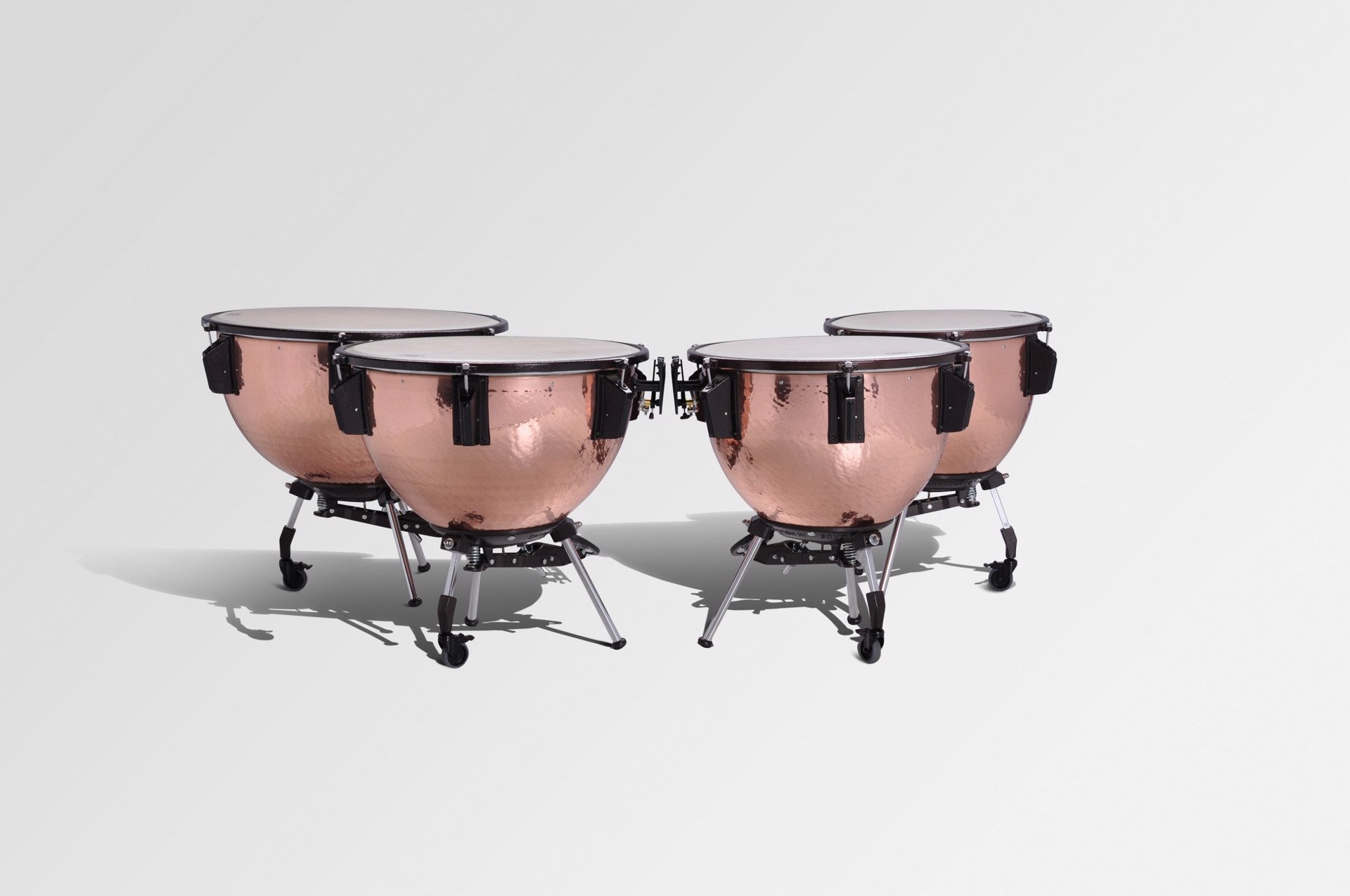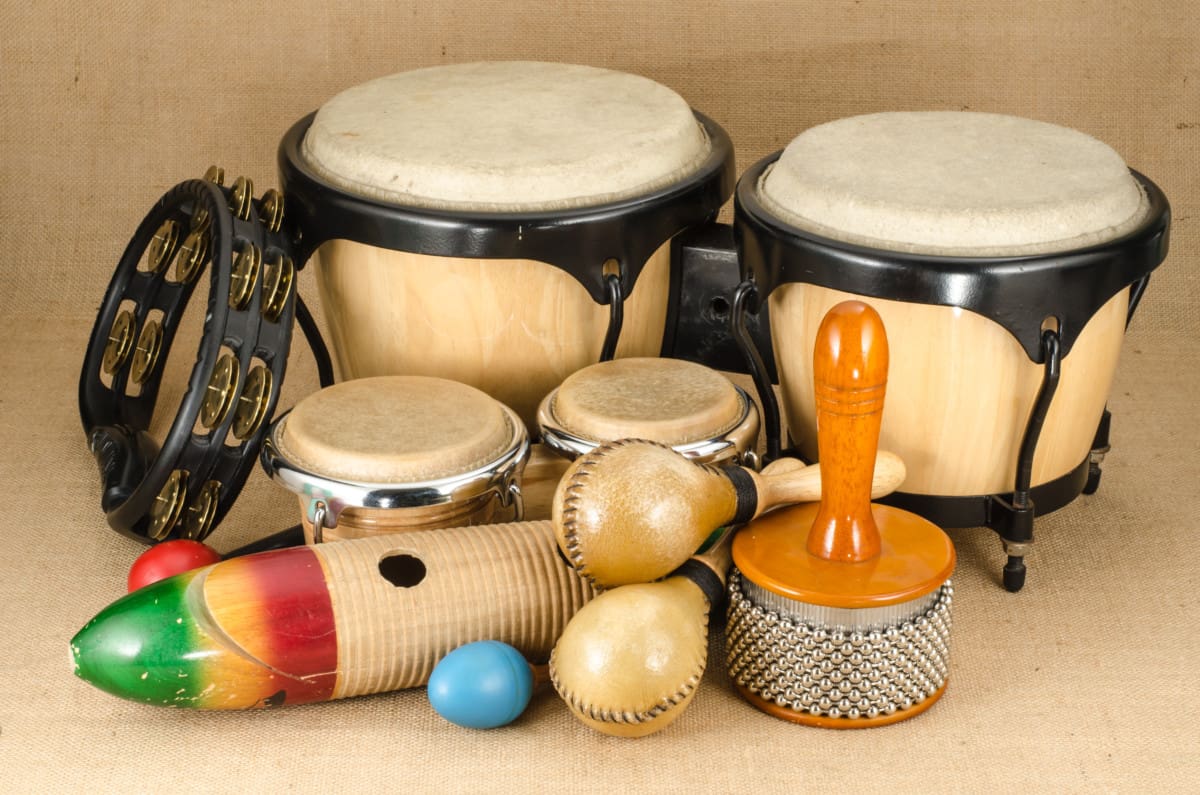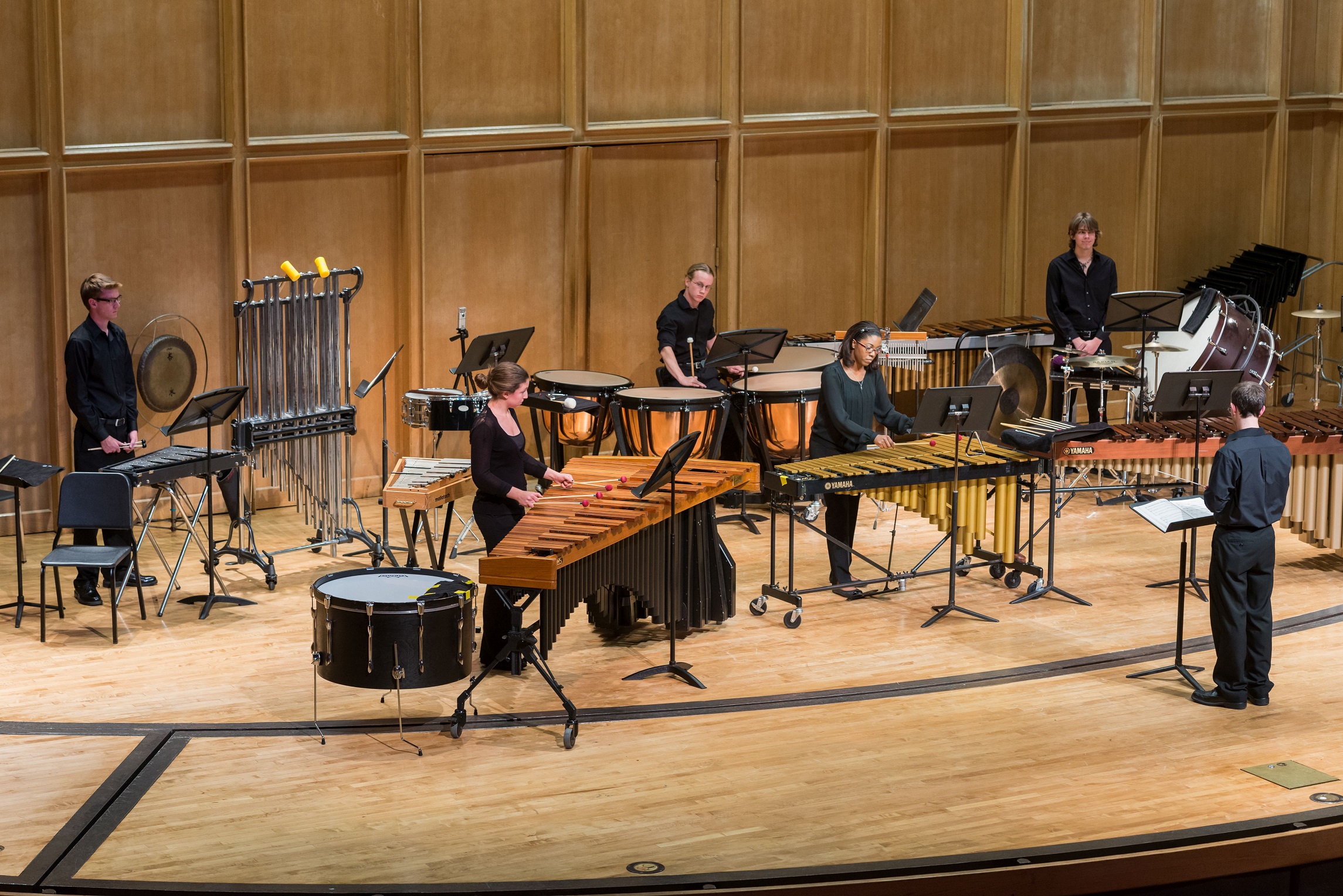Home>Instruments>Percussion Instruments>Which One Of These Percussion Instruments Is Pitched?
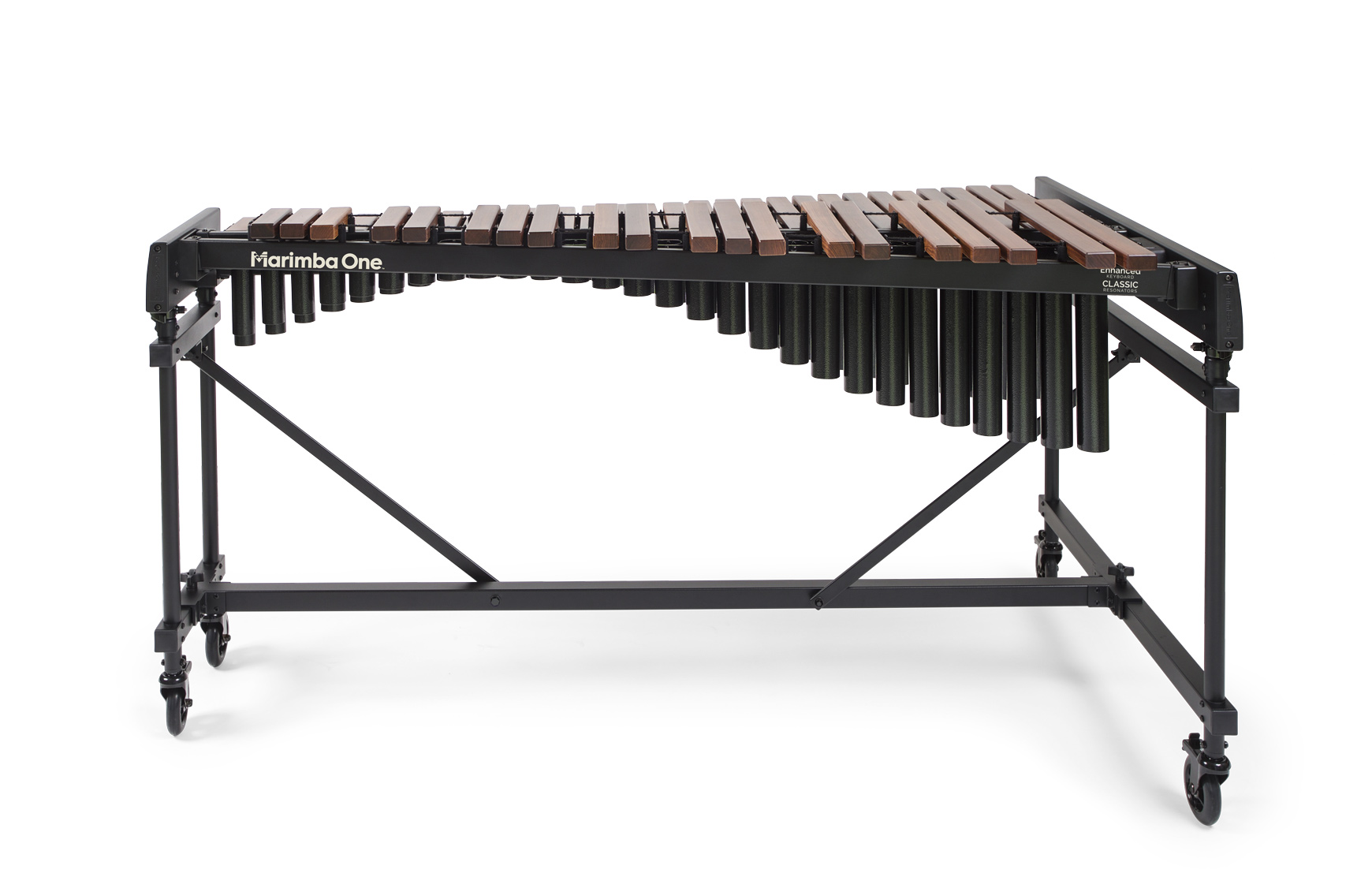

Percussion Instruments
Which One Of These Percussion Instruments Is Pitched?
Published: January 16, 2024
Find out which percussion instruments are pitched and how they contribute to the melody. Explore the wide range of melodious sounds produced by these diverse instruments.
(Many of the links in this article redirect to a specific reviewed product. Your purchase of these products through affiliate links helps to generate commission for AudioLover.com, at no extra cost. Learn more)
Table of Contents
Introduction
Percussion instruments have been an integral part of human culture for centuries, providing rhythm, texture, and excitement to music. From drum sets to maracas, there is a wide variety of percussion instruments that come in various shapes and sizes. One of the distinguishing features of percussion instruments is whether they produce pitched or non-pitched sounds.
In this article, we will explore the world of percussion instruments, focusing specifically on the difference between pitched and non-pitched instruments. We will delve into the characteristics of each category and provide examples of popular instruments in each category.
Understanding the difference between pitched and non-pitched percussion instruments is important for musicians, music educators, and enthusiasts alike. By having a clear understanding of the characteristics of these instruments, performers can choose the appropriate instruments for their musical compositions, and educators can ensure a well-rounded music education experience.
So, let’s dive into the captivating world of percussion instruments and explore the fascinating distinction between pitched and non-pitched sounds.
Definition of Pitched Percussion Instruments
Pitched percussion instruments are a subset of percussion instruments that produce specific musical notes or tones. Unlike non-pitched percussion instruments that produce unpitched sounds, such as a simple hit or a shaking sound, pitched percussion instruments are capable of producing discernible pitches, similar to the tones of melodic instruments like the piano or the flute.
These instruments consist of pitched elements, such as strings, bars, or membranes, which vibrate at specific frequencies to produce distinct musical notes. The pitch of a percussion instrument is determined by various factors, including the length, tension, and thickness of the material.
Pitched percussion instruments are often categorized into two main divisions: melodic percussion and harmonic percussion.
Melodic percussion instruments, such as the xylophone, vibes, and marimba, are constructed with a series of bars or plates made of materials like wood, metal, or synthetic material. Each bar or plate represents a specific pitch, and when struck, produces a distinct musical note. These instruments are often used to play melodies and harmonies in musical ensembles or solo performances.
Harmonic percussion instruments, on the other hand, produce multiple pitches simultaneously in a chord-like fashion. Instruments like the glockenspiel or chimes have multiple bars or tubes that are struck to produce harmonic tones. These instruments are commonly used in orchestral settings to create rich and colorful soundscapes.
It is worth mentioning that some percussion instruments can be classified as both pitched and non-pitched, depending on how they are played. For example, a snare drum can produce non-pitched sounds when played with a regular stroke, but it can also produce pitched sounds when tuned to a specific pitch or played with a specific technique.
Pitched percussion instruments offer a unique melodic and harmonic dimension to music, allowing percussionists to contribute melodic lines and harmonies to musical compositions. Their versatility and ability to produce defined pitches make them an integral part of various music genres, ranging from classical and jazz to world music and contemporary compositions.
Now that we have explored the definition and characteristics of pitched percussion instruments, let’s move on to understanding non-pitched percussion instruments.
Explanation of Non-pitched Percussion Instruments
Non-pitched percussion instruments, also known as unpitched percussion instruments, are a diverse group of instruments that do not produce specific musical pitches. Instead, these instruments provide rhythm, texture, and sound effects to musical compositions. Non-pitched percussion instruments are often used for accompaniment, adding a layer of rhythmic complexity and depth to the overall musical arrangement.
Unlike pitched percussion instruments, which produce specific pitches or tones, non-pitched percussion instruments generate a range of sounds without a discernible pitch. These sounds can be created through striking, shaking, scraping, or other methods of producing physical vibrations.
Non-pitched percussion instruments come in a variety of shapes, sizes, and materials. Examples of non-pitched percussion instruments include drums, tambourines, cymbals, shakers, triangles, and claves.
Drums, such as the bass drum, snare drum, and tom-toms, are perhaps the most well-known non-pitched percussion instruments. They produce a wide range of sounds and tones depending on how they are played, providing the rhythmic foundation for many musical styles and genres.
Tambourines, with their jingling metal disks and drumhead, create a tambourine’ing sound when struck or shaken. They add a lively and energetic element to music, commonly used in folk, rock, and pop genres.
Cymbals, made from brass or other metal alloys, are another popular non-pitched percussion instrument. They are known for their dramatic crashes and sustained shimmering sounds, adding accents and dynamics to musical compositions.
Shakers, such as maracas and egg shakers, produce sound when shaken, creating a rhythmic and percussive effect. They are commonly used in Latin American and Caribbean music, adding a distinctive groove to the music.
Triangles, small metal percussion instruments in the shape of a triangle, produce a clear and metallic sound when struck with a metal beater. They are often used to add accents and distinctive sounds to musical arrangements.
Claves, wooden sticks that are struck together, create a sharp and percussive sound. They are commonly used in Latin, Afro-Cuban, and popular music genres to provide a steady rhythmic pulse.
Non-pitched percussion instruments are essential in creating rhythmic patterns, adding texture, and enhancing the overall sonic palette of music. They allow musicians to add depth and complexity to their compositions, providing a wide range of percussive elements that contribute to the overall musical experience.
Now that we have explored the characteristics and examples of non-pitched percussion instruments, let’s delve into the differences between pitched and non-pitched percussion instruments.
Differentiating Pitched and Non-pitched Percussion Instruments
The distinction between pitched and non-pitched percussion instruments lies in their ability to produce specific musical pitches. Pitched percussion instruments are capable of producing discernible notes or tones, similar to melodic instruments like pianos or flutes. They are constructed with bars, strings, or membranes that vibrate at specific frequencies to generate distinct pitches.
On the other hand, non-pitched percussion instruments do not produce specific pitches but instead provide rhythmic elements and sound effects. They create a variety of sounds through striking, shaking, scraping, or other methods of producing physical vibrations. These instruments add texture, rhythm, and dynamics to musical compositions without contributing specific melodic or harmonic notes.
Another difference between pitched and non-pitched percussion instruments lies in their roles within musical ensembles. Pitched percussion instruments often play melodic or harmonic roles, capable of playing melodies, harmonies, or chords within the overall musical arrangement. They contribute to the melodic, harmonic, and tonal structure of the composition, enhancing the overall musical experience.
Non-pitched percussion instruments, on the other hand, primarily provide rhythmic elements and accents. They create the pulse and groove of the music, adding texture, depth, and energy to the overall sound. Non-pitched percussion instruments are often used for accompaniment, supporting and complementing the melodic and harmonic elements of the music.
Additionally, the physical design and construction of pitched and non-pitched percussion instruments differ. Pitched percussion instruments, such as xylophones or marimbas, have specific bar layouts or plate arrangements, each representing a specific pitch. Non-pitched percussion instruments, like drums or tambourines, come in various shapes and sizes, designed to produce a range of rhythmic and textural sounds.
It’s important to note that while pitched and non-pitched percussion instruments have their distinct characteristics, there can be some overlap. Some percussion instruments, like the snare drum or cymbals, can produce both pitched and non-pitched sounds depending on various factors such as tuning, technique, or playing style.
Understanding the difference between pitched and non-pitched percussion instruments plays a significant role in selecting the right instruments for musical compositions and performances. It allows musicians to create a well-balanced and cohesive soundscape by integrating the melodic, harmonic, and rhythmic elements effectively.
Now that we have differentiated between pitched and non-pitched percussion instruments, let’s explore some examples of popular instruments in each category.
List of Pitched Percussion Instruments
Pitched percussion instruments offer a melodic and harmonic dimension to music, allowing performers to play specific pitches and create melodic lines and harmonies. Here are some popular examples of pitched percussion instruments:
- Xylophone: The xylophone consists of wooden bars that are struck with mallets to produce specific pitches. It is a common instrument in orchestras and is also used in various styles of music.
- Marimba: Similar to the xylophone, the marimba features wooden bars, but it has a larger range and resonators underneath to enhance the sound. It is widely used in solo, chamber, and orchestral settings.
- Vibraphone: The vibraphone has metal bars that are struck with mallets, producing a unique and vibrant sound. It is frequently used in jazz and contemporary music genres.
- Glockenspiel: Also known as orchestra bells, the glockenspiel consists of metal bars that are played with mallets. It produces bright and bell-like tones and is commonly used in schools and orchestras.
- Handbells: Handbells are small bells with handles that are rung using hand movements. They are often used in church settings and handbell ensembles.
- Tubular Bells: Tubular bells, also called chimes, are metal tubes that are struck with a mallet. They produce a deep and resonant sound and are commonly used in orchestral compositions.
- Piano: While not traditionally classified as a percussion instrument, the piano technically falls under the category of pitched percussion. It consists of strings that are struck by hammers, producing specific pitches when the keys are pressed.
These pitched percussion instruments offer a wide range of tones and are essential in creating melodies, harmonies, and intricate musical arrangements. They contribute to the overall musical texture and add depth and complexity to compositions.
Now that we have explored pitched percussion instruments, let’s move on to non-pitched percussion instruments.
List of Non-pitched Percussion Instruments
Non-pitched percussion instruments provide rhythmic elements, texture, and sound effects to musical compositions. Here is a list of popular examples of non-pitched percussion instruments:
- Drums: This category includes various drums such as bass drums, snare drums, tom-toms, and conga drums. They produce a range of percussive sounds and are essential for creating rhythmic patterns in music.
- Tambourine: The tambourine consists of a shallow drumhead with metal jingles. It is played by striking it or shaking it to produce a shaking or jingling sound.
- Cymbals: Cymbals are metal percussion instruments that produce crashing and shimmering sounds. They are commonly used in various music genres, from orchestral music to rock and jazz.
- Shakers: Shakers produce sound when shaken, adding a percussive and rhythmic element. Examples include maracas, egg shakers, and cabasas.
- Triangles: Triangles are small metal percussion instruments shaped like a triangle. They produce a clear and ringing sound when struck with a metal beater.
- Claves: Claves consist of two wooden sticks that are struck together to create a sharp and percussive sound. They are widely used in Latin, Afro-Cuban, and popular music genres.
- Guiro: A guiro is a notched percussion instrument made from metal, wood, or synthetic materials. It creates a scraping sound when a stick or scraper is rubbed against its ridged surface.
- Tambour: The tambour is a snare drum-like instrument played with sticks or beaters. It adds a sharp and rhythmic sound to music.
These non-pitched percussion instruments contribute to the rhythm, texture, and energy of musical compositions. They provide accents, dynamics, and rhythmic complexity, enhancing the overall musical experience.
Both pitched and non-pitched percussion instruments have their unique roles in music, creating a diverse and rich sonic landscape. Musicians and composers utilize these instruments to bring their compositions to life, adding a wide range of percussive elements to captivate listeners.
Now that we have explored both pitched and non-pitched percussion instruments, let’s conclude our journey into the fascinating world of percussion music.
Conclusion
Percussion instruments, whether pitched or non-pitched, play a vital role in creating rhythm, texture, and excitement in music. Pitched percussion instruments produce specific melodic and harmonic tones, allowing performers to play melodies and harmonies, while non-pitched percussion instruments provide rhythmic elements and sound effects that contribute to the overall musical arrangement.
Understanding the distinction between these two categories of percussion instruments is crucial for musicians, educators, and enthusiasts alike. It enables performers to select the appropriate instruments for their compositions and performances, creating a well-balanced and cohesive sound.
Pitched percussion instruments such as xylophones, marimbas, and pianos provide melody, harmony, and tonal diversity to music. They offer the ability to play defined pitches, allowing percussionists to contribute to the melodic structure of a composition.
Non-pitched percussion instruments, on the other hand, such as drums, tambourines, and cymbals, provide rhythm, accents, and sound effects. They enhance the overall rhythmic elements of a piece, adding texture and excitement to the musical arrangement.
Whether it’s the mesmerizing melodies of a xylophone or the driving rhythm of a drum set, percussion instruments bring a dynamic and captivating element to any musical performance. From classical to jazz to world music, percussion instruments are versatile and widely used in various musical genres and styles.
In conclusion, the world of percussion instruments is vast and diverse, offering a wide array of both pitched and non-pitched options. Each type of percussion instrument brings its own unique qualities and contributes to the overall musical experience.
So, whether you’re drawn to the melodic nuances of a marimba or the energetic beats of a drum kit, exploring the world of percussion instruments opens up a world of rhythm, texture, and creative possibilities. So, embrace the power of percussion and let the captivating sounds of these instruments resonate through your musical journey.


